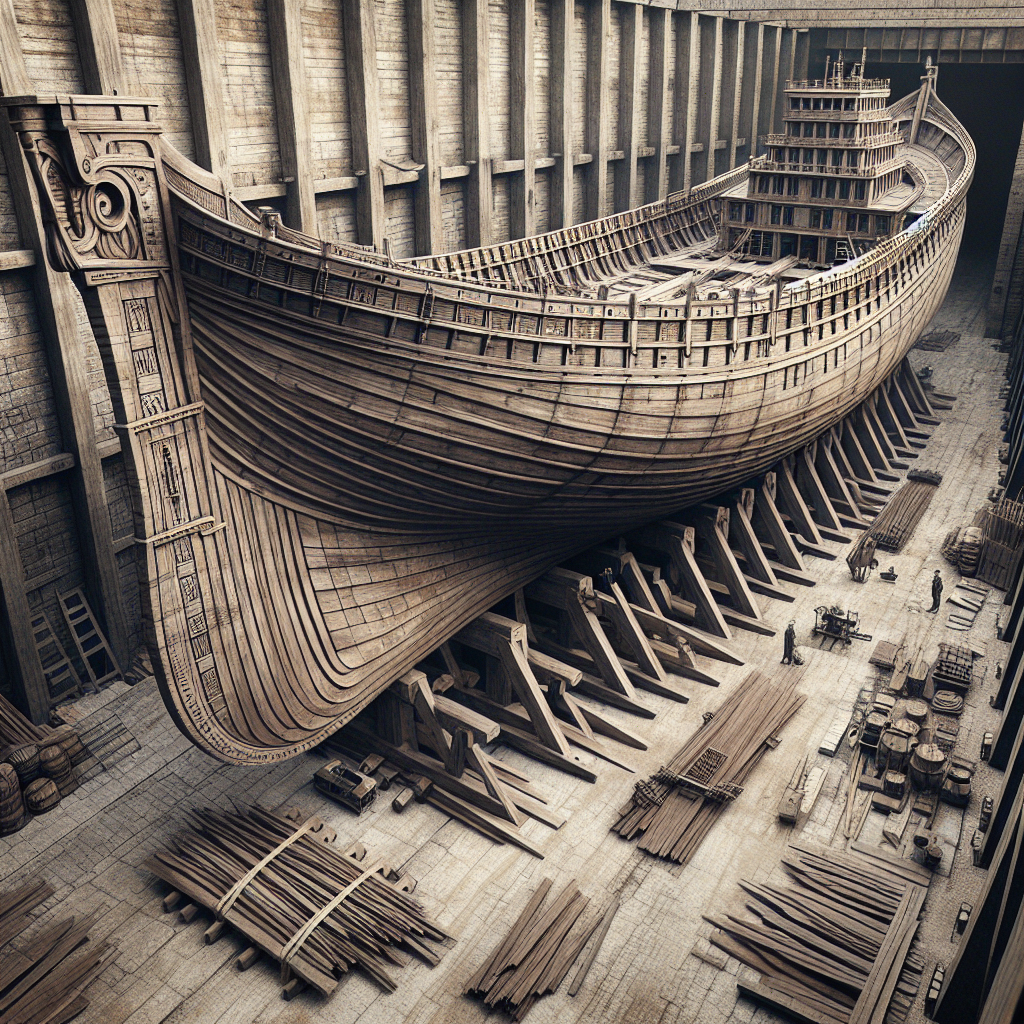Unveiling the Dimensions of Noah’s Ark: A Closer Look at its Size and Structure

SUBSCRIBE TONIGHT prime video
Unveiling the Dimensions of Noah’s Ark: A Closer Look at its Size and Structure
Noah’s Ark has long been a subject of fascination and intrigue. The biblical story of Noah and the great flood has captivated the minds of people for centuries. But amidst the awe-inspiring tale lies a question that has puzzled many: what were the actual dimensions of Noah’s Ark? In this article, we will delve into the size and structure of this legendary vessel, providing a comprehensive analysis that sheds light on its true magnificence.
The Size of Noah’s Ark
According to the book of Genesis, Noah’s Ark was built to withstand the catastrophic flood that would cleanse the Earth. The Bible states that the Ark was 300 cubits long, 50 cubits wide, and 30 cubits high. But what exactly is a cubit? A cubit is an ancient unit of measurement, typically defined as the length from a person’s elbow to the tip of their middle finger. While the exact measurement of a cubit may vary, scholars estimate it to be around 18 inches or 45 centimeters.
Based on this estimation, we can calculate the approximate size of Noah’s Ark. The length of 300 cubits would be around 450 feet or 137 meters, the width of 50 cubits would be about 75 feet or 23 meters, and the height of 30 cubits would be approximately 45 feet or 14 meters. These dimensions make Noah’s Ark an impressive feat of engineering, especially considering the time period in which it was constructed.
The Structure of Noah’s Ark
Noah’s Ark was not just a simple boat. It was a massive vessel designed to house a diverse array of animal species and sustain them for the duration of the flood. Its structure was carefully planned and constructed to ensure both stability and functionality.
The Ark was built using gopher wood, a term mentioned in the Bible that refers to a type of wood that is durable and resistant to water. The exact identity of gopher wood is uncertain, as the term is not found elsewhere in the Bible or in any other ancient texts. Some scholars speculate that it could be a now-extinct type of wood or a specific kind of construction technique.
The shape of Noah’s Ark is also worth noting. It was not designed like a typical boat with a pointed bow and stern. Instead, it had a rectangular shape with flat sides. This design choice allowed for maximum storage capacity and stability, crucial factors when accommodating thousands of animals and enduring the tumultuous waters of the flood.
Inside the Ark, there were multiple decks, providing ample space for animals, food storage, and other necessities. These decks were divided into various compartments or stalls to separate different species and prevent conflicts. The Bible also mentions the presence of a window and a door on the Ark, further emphasizing the thoughtfulness behind its structure.
FAQs
1. Were all animals on Noah’s Ark?
No, not all animals were on Noah’s Ark. The story of Noah’s Ark depicts the saving of two of every kind of land-dwelling animal, as well as seven pairs of some animals. The exact number of species represented is unknown.
2. How did Noah fit all the animals on the Ark?
The Ark’s size, as mentioned earlier, provided sufficient space to accommodate a diverse range of animal species. Additionally, it is believed that Noah would have brought young animals to save space and ensure the survival of each species.
3. How long did Noah and the animals stay on the Ark?
According to the Bible, Noah and the animals stayed on the Ark for approximately one year. The floodwaters took 40 days and 40 nights to subside, and it took additional time for the Earth to dry.
4. Did Noah encounter any difficulties during the construction of the Ark?
The Bible does not explicitly mention any difficulties encountered by Noah during the construction of the Ark. However, considering the magnitude of the project and the challenges involved, it is reasonable to assume that there were obstacles along the way.
5. Are there any remains of Noah’s Ark?
There have been various claims and alleged discoveries of Noah’s Ark remains throughout history. However, none of these claims have been scientifically validated, and the existence of physical remnants of the Ark remains unverified.
In conclusion, Noah’s Ark was an extraordinary vessel with remarkable dimensions and a carefully planned structure. Its size, along with its functionality and durability, allowed it to serve its purpose during the great flood. While the exact dimensions and details may continue to be debated, the story of Noah’s Ark remains a testament to human ingenuity and the power of faith.
SUBSCRIBE TONIGHT prime video







